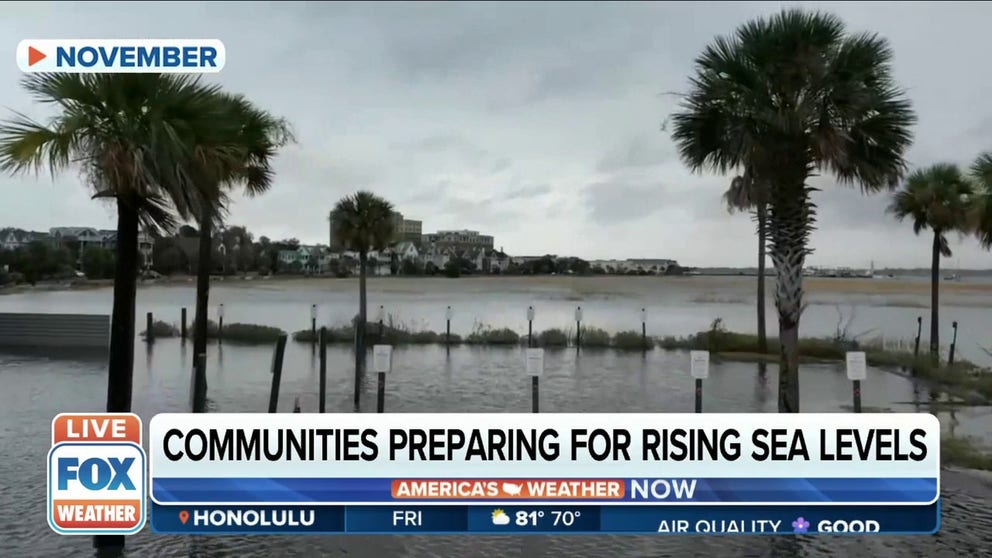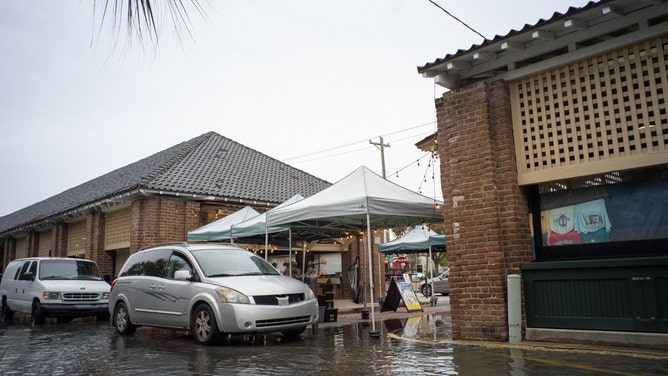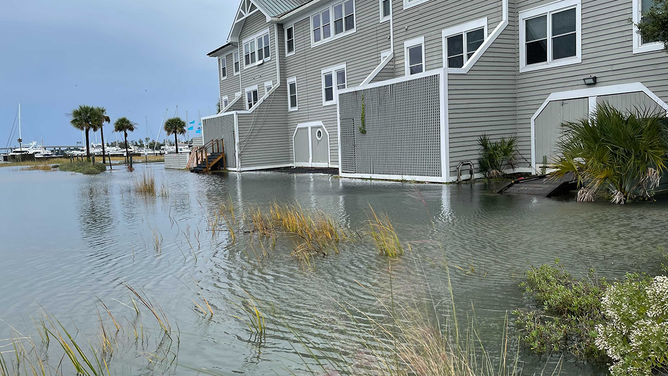Charleston focusing on resiliency as report warns of future sea-level rise
Report says US coasts could see century’s-worth of sea-level rise in 30 years
Rising sea levels: How coastal communities are preparing
Federal agencies release report that projects up to a foot of sea level rise in the next 30 years. Fox News’ Austin Westfall on how coastal communities are preparing for rising tides.
CHARLESTON, S.C. – Ladson Mills lives on the southern tip of the Charleston Peninsula, surrounded by the Cooper and Ashley rivers and the harbor that leads to the Atlantic.
"November through May it’s the greatest place in the world, and June through October you sleep with one eye open," said Mills, who lived through Hurricane Hugo in 1989. He said the storm produced a surge that pushed chest-deep water into his garage.
Lately, however, it hasn’t been a monster hurricane that’s been flooding the area. There has been an increase in the frequency of flooding from tides. Most recently, tidal flooding combined with winds from a coastal storm left parts of the city underwater in November.
"There are days where the sun comes out, and the water comes up, and the entire peninsula floods," said Charleston City Councilman Mike Seekings.
A report issued last week said that U.S. coastlines will likely see sea levels rise by nearly a foot by 2050 – the same amount of rise in a 30-year period as was seen in the past century.
Bob Kopp, a professor at Rutgers University who contributed to the report, said it was not meant to be alarming. It was meant to give people time to prepare.
"If we plan, we can deal with a foot of sea-level rise," Kopp said. "The only reason we can’t, in general, is if we don’t plan."
Leaders in Charleston said the forecast of rising waters along the coast is why they are prioritizing resiliency projects. These include increasing the height of sea walls and building a massive pump that helps remove water that tops those walls.
"When we have higher tides than we’ve had for the past 100 years, it’s going to protect us from those tides," Seekings said.
Kopp said the East Coast and the Gulf Coast are most susceptible to the threat of rising tides. He said the West Coast is less susceptible due to steeper land.





